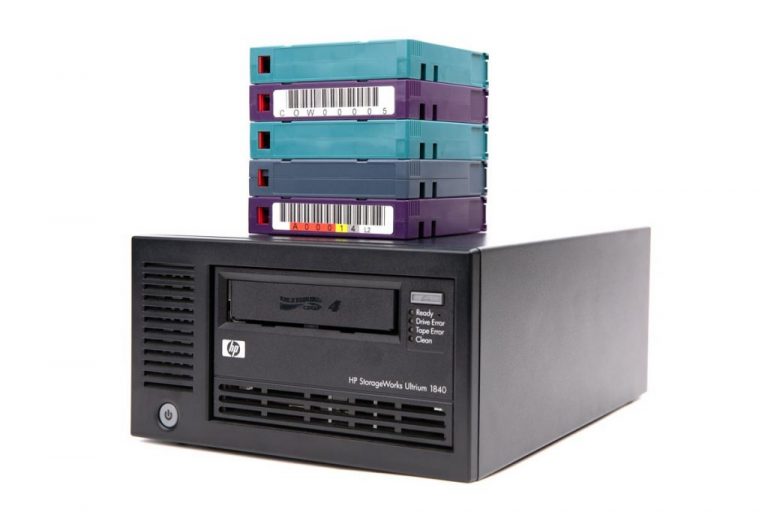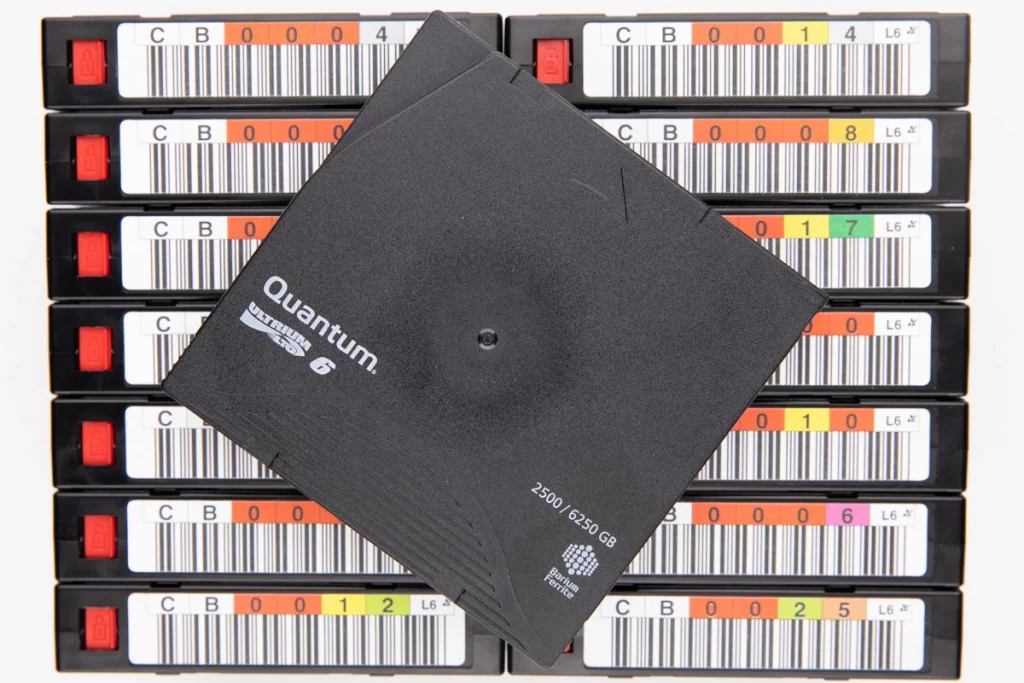LTO tape is a type of magnetic tape storage technology developed specifically for data backup and archiving purposes. LTO tape, which stands for Linear Tape-Open, was created as a joint effort between Hewlett-Packard, IBM, and Quantum Corporation in the late 1990s. Since then, it has become one of the most popular and reliable storage solutions for large-scale data centers and enterprise-level businesses.
In this blog, we will dive deeper into what LTO tape is, how it works, and why it is still relevant in today’s data storage landscape.
Overview of LTO Tape
LTO tape is a magnetic tape storage technology that allows large amounts of data to be stored and accessed easily. It is an open-format standard, meaning that multiple manufacturers produce LTO tapes and drives, allowing for a competitive marketplace and ensuring that businesses have various options.
LTO tapes come in several generations, and each offers increased capacity and high data transfer rates. Currently, the latest generation of LTO tape is LTO-9, which offers up to 45 terabytes of compressed data storage capacity and a maximum transfer rate of 400 megabytes per second.
How LTO Tape Works
LTO tape works using magnetic tape coated with a thin layer of magnetic particles. These magnetic particles are arranged in a pattern that a magnetic read/write head can access. Data is written to the tape by the read/write head using a magnetic field, and the data is read back from the tape by the same read/write head using a different magnetic field.

The data is organized into blocks or segments, and a small amount of blank tape separates each element. This is done to ensure that the data can be read and written efficiently and minimize data corruption risk.
LTO tape drives use a linear reading and writing process, moving the tape past the read/write head in a straight line. This differs from other tape technologies, such as Digital Audio Tape (DAT), which uses a spiral scanning process to read and write data.
LTO tapes also have a servo track that runs along the length of the tape. This servo track contains information that helps the tape drive locate the data on the tape and position the read/write head correctly. This ensures that the data is read and written accurately and minimizes the risk of errors.
Advantages of LTO Tape
LTO tape has several advantages over other data storage technologies. One of the main advantages is its high capacity. LTO tapes can store large amounts of data, making them ideal for data backup and archiving.
LTO tape is also very reliable. The tape is durable and can withstand heat, humidity, and dust exposure. LTO tape drives are also designed to be robust and reliable, with features such as error correction and head cleaning to ensure that data is read and written accurately.
Another advantage of LTO tape is its low cost per terabyte. Compared to other storage technologies, such as solid-state drives (SSDs) or hard disk drives (HDDs), LTO tape is much cheaper per terabyte of storage capacity.
This makes it an attractive option for businesses that need to store large amounts of data but have a limited budget.

Lastly, LTO tape is also very scalable. As the demand for data storage grows, businesses can simply add more LTO tapes to their existing infrastructure to expand their storage capacity. This allows businesses to easily mount their data storage solutions as their needs change over time.
Nevertheless, LTO tapes are not error-free and are susceptible to data loss. In this situation, all the valuable files will become inaccessible.
Causes of Data Loss on LTO Tapes
Data loss on LTO tapes can occur due to a variety of causes, some of which are related to the handling of the tapes. In contrast, others are associated with intrinsic issues with the physical media. Common causes of data loss on LTO tapes include improper handling, mechanical damage, misuse, and environmental conditions.

Misuse of LTO tapes can also lead to data loss over time due to mechanical wear and tear or incorrect loading techniques.
For example, if an LTO tape cartridge is not inserted into a compatible drive correctly or if too much pressure is placed onto the spindles during insertion, then this could cause the tape to become damaged, and data loss may occur.
Finally, environmental conditions can also lead to data loss on LTO tapes. Temperatures that are too high or too low can cause warping of the magnetic media, while strong air currents can lead to dust particles becoming trapped inside the cartridge.
Storing LTO tapes in cool, dry environments with minimal exposure to external elements such as sunlight, moisture, and dust is important. Regular storage environment maintenance should be conducted to ensure your tapes’ optimal performance and longevity.
In case of a tape data loss, it is essential to entrust your case to professionals. Only this way you will achieve the maximum results of recovery. Hence, tape data recovery can be assigned only to a reputable company, such as RAID Recovery Services.
Data Recovery from LTO Tapes
RAID Recovery Services is the leading provider of data recovery services for LTO tapes. Our team of experienced technicians and engineers has the expertise to recover and restore lost or corrupted data from tape media, no matter how severe the damage might be.
We use advanced techniques to effectively identify and isolate defects in tape media, allowing us to successfully repair or replace them to restore access to critical data. We can also retrieve data that has been accidentally or maliciously erased or modified.
RAID Recovery Services is committed to providing our customers with dependable solutions for recovering their data from LTO tapes, regardless of whether stored on a single tape cartridge or multiple media drives.
Our certified technicians are highly trained and experienced professionals who take great care when handling sensitive information and applying modern best practices when dealing with valuable business assets.

We understand that losing access to important files can be devastating for businesses and organizations alike, so we strive every day to ensure our customers are satisfied with their results. Our knowledgeable staff will work closely with you throughout the process to ensure that potential risks or issues are addressed quickly and efficiently.
Get in touch with us today to restore valuable data from your tape, and our experts will do everything in their power to assist you.
Frequently Asked Questions
Can data from damaged LTO tapes be recovered?
LTO tapes are durable but can be damaged by the environment, mishandling, or wear and tear. Data recovery is often possible through specialized services using advanced techniques, though success rates vary with the extent of the damage and tape quality.
How long does data recovery from LTO tapes usually take?
Data recovery times from LTO tapes range from a few days for simple issues to several weeks for complex cases, depending on the damage and data amount. Professionals can estimate the timeline after evaluating the tape.
Are tape drives still used for backup?
Despite the rise of disk-based backup and cloud storage options, tape drives are still widely used for backup and archival purposes. In fact, many organizations continue to rely on LTO tape as a cost-effective and reliable method for storing large amounts of data.
How fast is the LTO tape drive?
LTO tape drives have significantly improved their speed with each new generation. The newest LTO-9 tape drive, released in 2021, delivers a native data transfer speed of up to 400 MB/s and a compressed speed of up to 900 MB/s, perfectly suited for high-volume data transfer needs.
Can LTO tape be used for long-term storage?
LTO tape is a reliable option for long-term data storage due to its archival capabilities and data integrity features. It has a shelf life of up to 30 years, making it an ideal choice for organizations looking to store data for extended periods without worrying about loss or corruption.
How does LTO tape work?
LTO tape stores data on magnetic tape in a cartridge, with tape drives reading and writing data like a cassette player. Data is stored as magnetic tracks representing binary code, which can be read back and used by computers or servers.